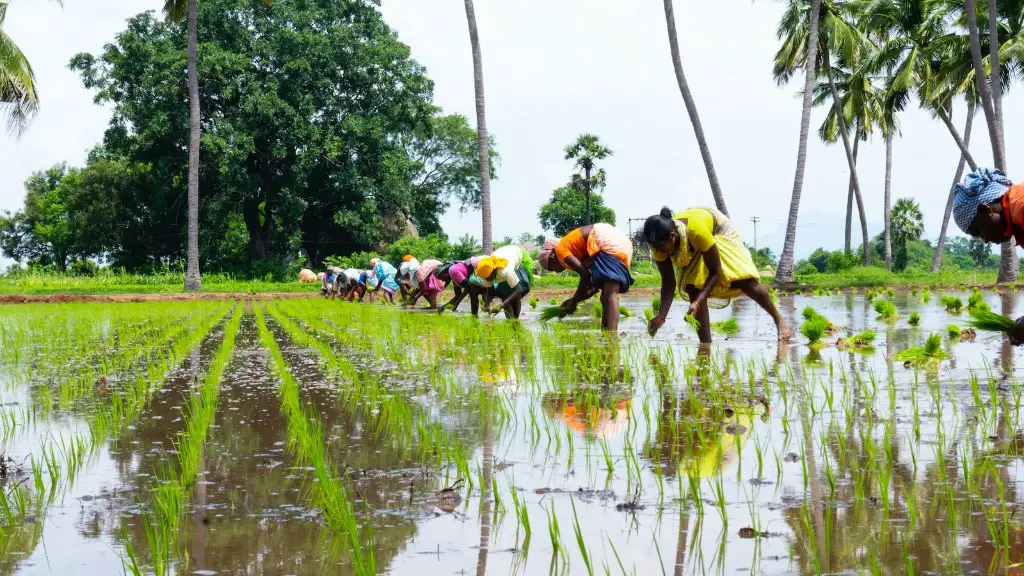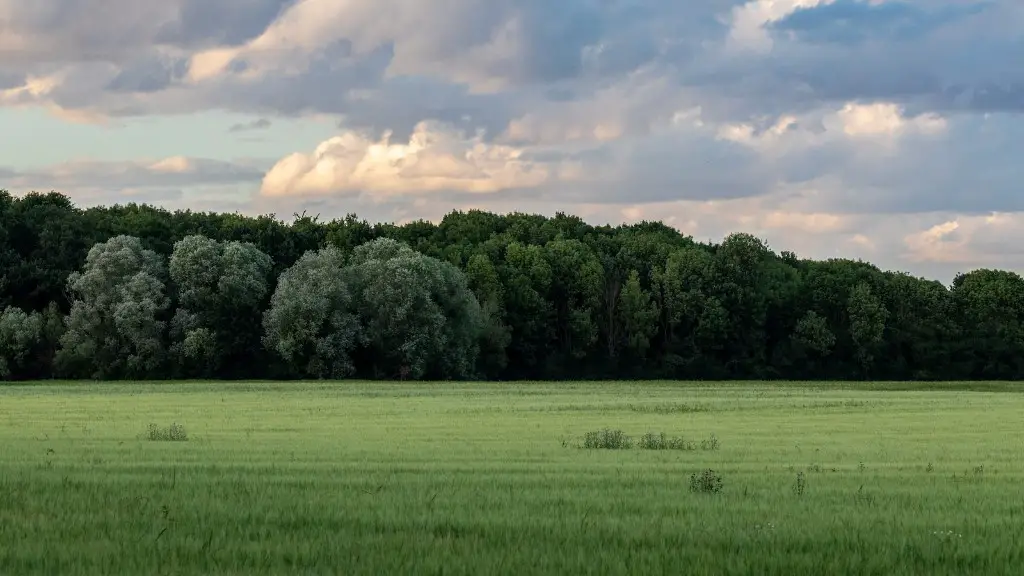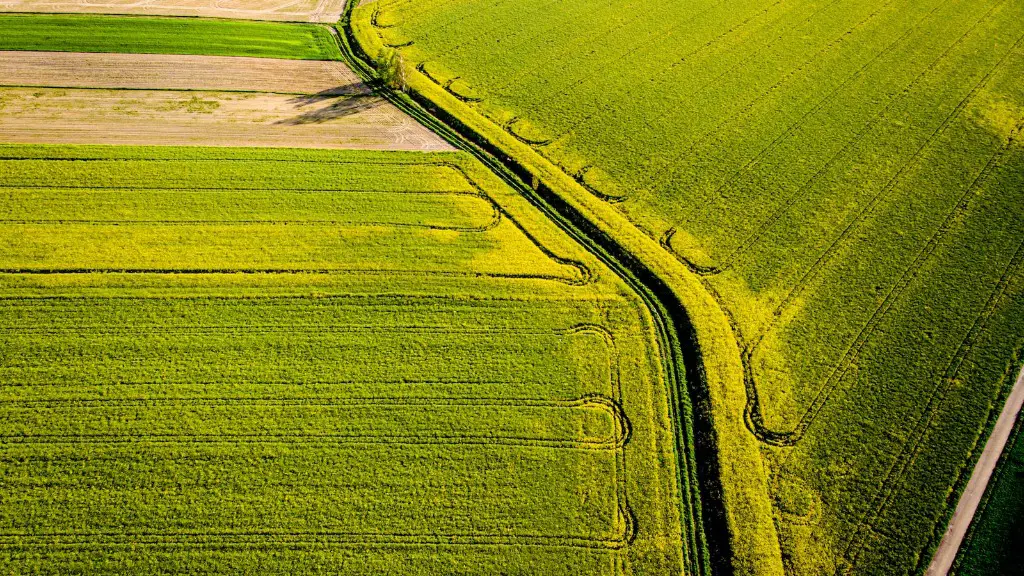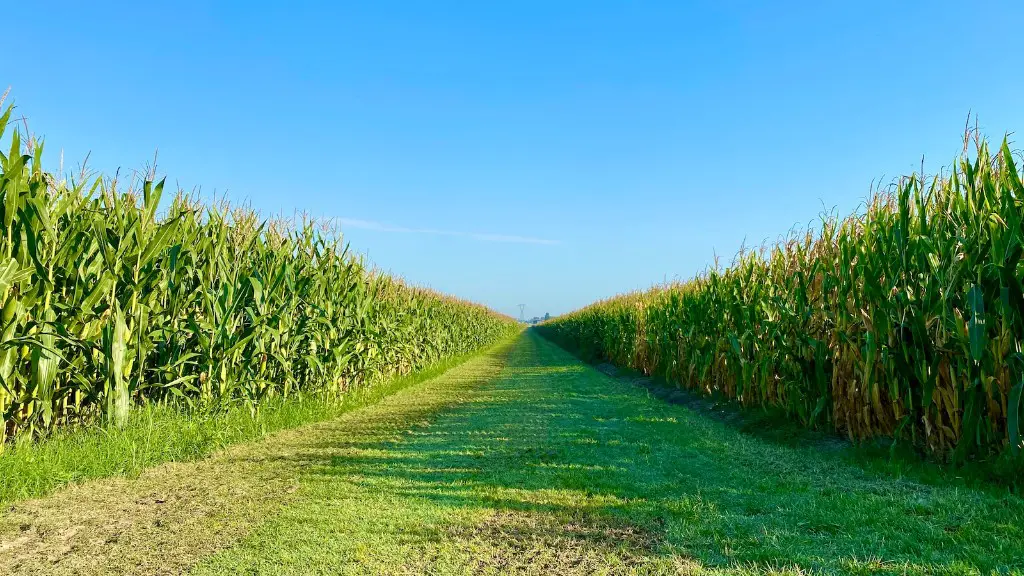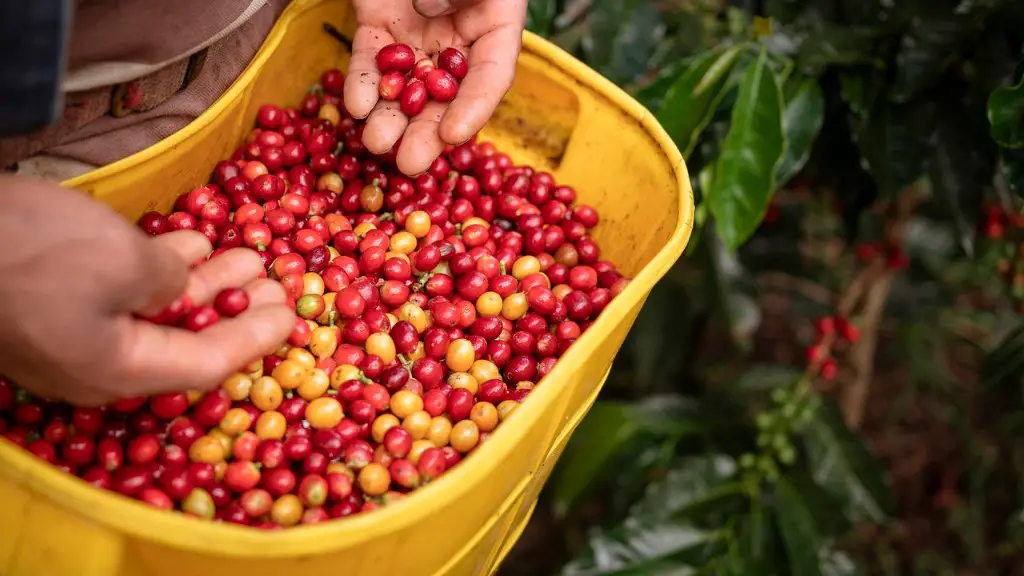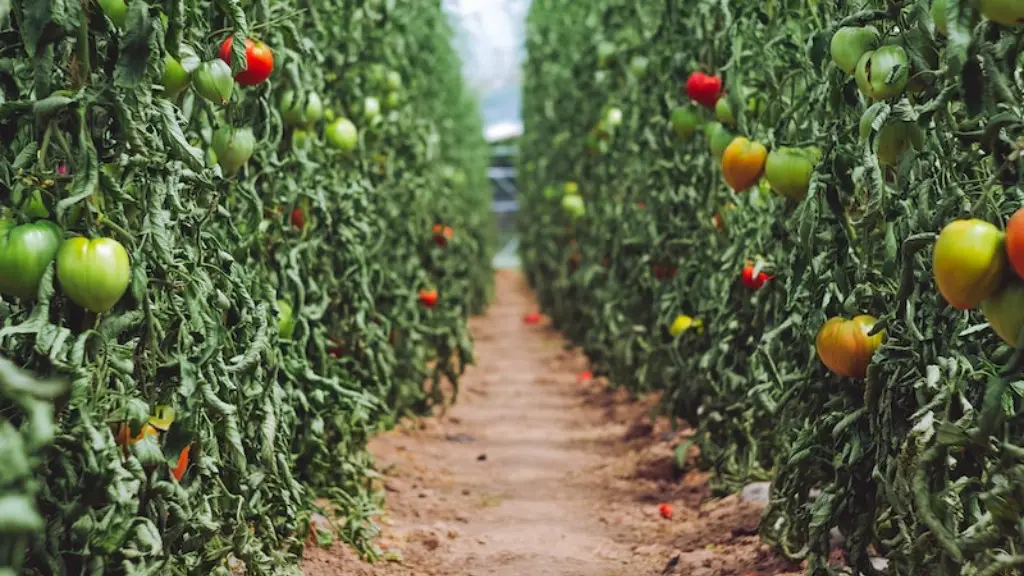Humans have been engaged in agricultural practices for centuries. While the goal of agriculture is to feed the world, its methods have become a detriment to the environment. It has brought many environmental issues, such as habitat destruction, global warming, use of synthetic fertilizers and herbicides, biodiversity loss, and pollution.
Habitat destruction is probably the biggest effect agriculture has had on the environment. Large farmlands on which commercial crops are grown are taking up areas previously used by wild animals. This has stripped away their natural habitats and led to their extinction in some areas. The destruction of habitats also removes food sources that would otherwise have been available to animals in the area.
Global warming is also linked to agriculture. Every time a large plot of land is cleared to make room for farming, it removes trees and other plants that would normally store carbon. As a result, these carbon stores are released into the atmosphere, adding to already high levels of pollution. This is why carbon emissions from agriculture make up about 11 percent of the total greenhouse gas emissions.
Agricultural practices also utilize synthetic fertilizers and herbicides that can be dangerous for the environment. These chemicals are not just used on the crops, but can leach into groundwater or be carried away by wind, where they can be absorbed by neighboring plants and animals. Some of these chemicals can be toxic if ingested and can cause health problems for people and animals alike.
Biodiversity loss is another consequence of the agricultural industry. The introduction of monoculture farming, where only one species of crop is grown, causes the destruction of native plant species and the destruction of habitats. This can have a significant impact on the food chain, as some animal species rely on certain plants to survive. As a result, the impact of agricultural practices on biodiversity is significant and can lead to the extinction of species over time.
Finally, the agricultural industry produces a lot of pollution. Chemical fertilizers and pesticides used to increase crop yields have polluted waterways, leading to dead zones where no new life can emerge. The use of machinery to harvest crops has also released large amounts of air pollution into the atmosphere. This adds to the already high levels of pollution, which contributes to global warming and has serious consequences for the environment.
Soil and Water Pollution
Agricultural activities contribute to soil erosion and water pollution. The use of chemical fertilizers and pesticides leads to soil depletion, which has a major effect on soil fertility and can lead to barren land. In addition, runoff from farmlands can lead to water pollution as it decreases the quality of surface water by increasing the amount of nutrients, such as nitrates and phosphates. This can lead to algal blooms which can, in turn, increase the levels of toxins in the water.
The use of synthetic fertilizers also leads to an increase in the amount of salt in soil. This reduces the amount of oxygen in the soil and can make it difficult for plants to grow, causing them to die. In addition, farm runoff can often contain pharmaceuticals and other harmful contaminants, which can make their way into the drinking water, leading to health problems for people and animals alike.
The use of machinery on farmlands can also lead to soil compaction. This compaction can limit the amount of air and water available to the plants, reducing their potential yield. Excessive tillage of fields can also lead to erosion of topsoil, making it harder for plants to survive. Additionally, bulldozers and tractors can damage underground aquifers, leading to contamination of water sources.
Agricultural Waste
Agriculture also produces a significant amount of waste. This waste often contains hazardous chemicals and pollutants that can be dangerous for the environment. In addition, livestock waste, including manure and animal waste, can pollute waterways, leading to waterborne diseases. The burning of crop residues from agricultural production also releases greenhouse gases into the atmosphere and adds to global warming.
The use of synthetic fertilizers and pesticides is also a major source of waste in agriculture. These chemicals are often not broken down by the natural environment and can accumulate in the soil or be carried away by wind and water. This can lead to the contamination of food sources, as well as affect the health of people and animals.
Agricultural wastes can also lead to land degradation, such as desertification, throughout the world. This occurs when agricultural activities cause the land to be overused and depleted. As a result, the land becomes barren and unable to produce food. This can lead to a variety of environmental issues including air, water, and soil pollution.
Agrochemical Pollution
Agriculture is also the largest source of agrochemical pollution in the world. Agricultural pesticides and fertilizers are often used in excess, leading to contamination of water sources and soils. These chemicals can be toxic to humans and wildlife, as well as disrupt the balance of ecosystems and ecosystems services.
It has been found that overuse of synthetic fertilizers and pesticides can lead to an increased risk of cancer and other health problems for humans and wildlife. Additionally, the runoffs from these chemicals can contaminate water sources, leading to drinking water contamination. This can lead to the contamination of food sources and cause health risks for humans and animals alike.
Agriculture also produces a significant amount of dust particles, which can be harmful to human health. These dust particles can be carried away by wind and settle in areas where they are inhaled by people. The dust particles can contain microbial contaminants as well as chemical residues, leading to an increase in health risks.
The use of genetically modified organisms (GMOs) has increased significantly in the past few years. While there is no scientific consensus on the risks posed by GMOs, research has shown that genetically modified crops are more susceptible to pests and can adversely affect the health of soil in the long term.
Nitrate Pollution
Nitrates are a major source of pollution in agricultural areas. These nitrates come from chemical fertilizers that are used to increase crop yields. These nitrates are often present in runoff from farmlands and can contaminate surface water sources. It has been found that nitrate levels above 10 mg/L can be harmful to humans and other animals.
Excessive nitrates can also lead to an increase in the growth of algae, which increase oxygen demand in water sources. This can lead to a decrease in oxygen levels, making it difficult for fish and other aquatic life to survive the environment. High nitrate levels can also lead to a decrease in water quality, which can lead to serious health issues for people who consume contaminated water.
Continued use of chemical fertilizers can also lead to groundwater contamination. These nitrates are often absorbed by plants and can slowly seep into the groundwater, leading to contamination. This can lead to an increase in health risks, especially for vulnerable communities whose drinking water sources are contaminated by nitrate-rich water.
Nitrates can also have a significant impact on soil fertility. They can lead to the depletion of beneficial microorganisms and can make it difficult for plants to absorb necessary nutrients. This can lead to reduced crop yields, as well as poor quality soil that is unable to support plant growth.
Climate Change
Agriculture has been a major contributor to climate change. The practices of deforestation and burning of crop residues release large amounts of CO2 and other greenhouse gases into the atmosphere. In addition, the use of synthetic fertilizers and pesticides can cause a decrease in soil fertility, which can lead to further carbon emissions as the land is less able to store carbon.
Agricultural practices have also been linked to changes in local climates. For example, the use of pesticides can reduce insect populations and disrupt food webs, leading to an increase in temperatures. In addition, the clearing of land for the purpose of crops can lead to an increase in the amount of sunlight absorbed by the land, causing local temperatures to rise.
Furthermore, with the increase in global temperatures, crop yields can be negatively affected. This is due to changes in the amount of rainfall, an increase in droughts, and extreme weather events such as hurricanes and floods. These changes can cause significant damage to crops, leading to lower yields and higher prices for food.
Agriculture is also responsible for the use of large amounts of water. The irrigation of crops can lead to significant water waste, as well as an increase in the levels of salts and nitrates in the water sources. This can lead to water contamination and, in the worst cases, an increase in water shortages as water resources become polluted or depleted.
